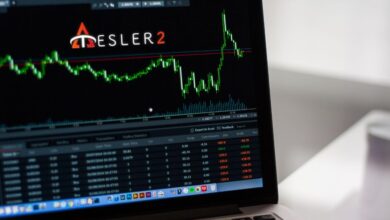What Does Bullish Mean In the Stock Market?

Bullish and Bearish are the two most important terms in stock trading. When an investor thinks that the stock market will go up, then it is called the “bullish” market, and if the investor thinks that the stock or the overall market will go down, then it is called the “bearish” market. The term “bull” or “bullish” comes from the word bull, resembling its action of striking upwards with its horns.
Being a bull often represents an action or individual opinion. Traders may be bullish in certain assets; they believe that the prices will rise very soon, and consequently may buy those assets to earn financial gains. Alternatively, a trader might have an opinion that the price of an asset will rise, but he refrains from making any trade based on that opinion. Therefore, it depends on the traders’ perceptions, whether the market is bullish or bearish. A trader may be bullish on certain markets like crude oil and gold; bearish on others like Euro currency or Japan’s stock index. Let’s find out how.
Bullish- for short-term traders
For a short-term trader, the stock market may appear bullish if the stock price is likely to go up in the coming few days or even in the coming minutes. Therefore, for these stock traders, the term bullish is more of individual opinion and has nothing to do with the company’s perspectives. Like for example, if at any point in time, investors believe that a particular stock has been oversold, he might buy those stocks in the hope that the price will rebound back soon.
Bullish for Long term traders
In the long term, the bull market involves the company’s perspectives as a whole, unlike in the short-term, where only the individual trader’s opinion is taken into account. When traders are bullish for the long term, it means that they believe that something good is about to happen, which will be in favor of the company.
Therefore, the investors may have a bullish market long term or a bearish short term; e.g. for example, he may be having a long-term investment in index funds because he hopes that the stock market may rise in the coming years, and he might earn some substantial amount of money. Whereas on the contrary, the same person might think the stock market is going to tank very soon, and thus, he starts hedging against his short-term stock index portfolio. All these tactics help the short-term traders to reap the benefits of price losses, and would potentially help to set off losses in their long-term investments also.
Bullish for the economy as a whole
Sometimes the term “bullish” is used to describe the overall market status or the entire economy. When an individual trader has a bullish view of the entire securities market, it means that he believes that the securities market may rise in the coming few days with an improvement of the economic conditions. For an economy, the term bullish markets are used to imply that the GDP of that economy is likely to rise with other positive economic developments. The bull market concept in an economy is beyond the short-term or long-term approach; rather, it sustains a bull market economy for several years.
How to identify a bullish stock?

The following strategies will help investors to identify whether a security is bullish or bearish.
- Looking at the strength and weaknesses of an individual stock, it can be differentiated whether it is a bull market stock or a bear market stock. A bear market stock shows significant weaknesses as their price falls. Moreover, a bearish stock can exist even amidst the strong bull market. The decline in their prices is deep and quick.
- Stocks can be identified whether they are bullish or bearish by analyzing the stock charts using various technical tools. Technical tools like the moving average can be drawn on a stocks chart to identify even the top bull market stocks. The moving average would help you see the stock’s status on a chart very quickly and effortlessly, by differentiating between a strong stock and a weak stock. For example, if a 50-day moving average is used, the stocks that would remain above the 50-day moving average are the bull market securities, and the opposites are the bearish stocks.
- Another way to identify whether a particular stock is bullish or bearish is by comparing the stock price movements with the main stock market index like the s&p 500 index for the US equity markets. If the stock price rises steeply than the stock market index, then that particular stock is undoubtedly a bull market. Contrarily, if the price of stock tanks down in comparison to the stock market index, then such a ticker would mean a good bear market opportunity for the coming few days.
Additional Features of a Bull market
 Some of the other features of a bull market are as follows:
Some of the other features of a bull market are as follows:
- There always exists a strong demand and weak supply for securities in a bull market. It means that many investors wish to buy stocks, but the sellers are very few, and therefore there always exists an imbalance between the number of securities available for purchase. As a result, the stock prices increase as investors compete to buy equities.
- In a bull market, the market sentiment is always positive because the market behavior is determined by the individual investor’s opinion that the stock market will rise. Moreover, in a bull market, the securities market’s performance and the investor’s psychology depends on each other.
- A Bull market is associated with a strong economy where people are willing to spend money, which again helps in strengthening the economy.
The strength and weaknesses of a particular stock are responsible for the movement of its price. Therefore, if you want to move the stocks’ price in the direction that you want them to be, you must be capable enough to identify the top bull market and bearish on the market trading opportunities. Bull markets give courage to an investor to invest in a stock that would help him to earn money, but remember not to let your bull markets sentiments take over your ability to judge the stock market.
FAQs
1. Do you buy or sell in a bull market?
In a bull market, investors are always willing to buy securities.
2. How do you know if a stock is bullish?
You can either read the related articles on financial news, like bull markets and bear markets. And find out the status of the securities, or else compare the prices movements of the securities with the securities index; if you see that the price of the securities is more than the index, then it is a bull market security.
3. What is the difference between bullish and bearish markets?
The main difference is the status of securities, whether they are thriving through bull markets or bear markets is the trend of its price. If the prices of the securities are upward-moving, then they are bull market securities, and on the contrary, the falling prices of the securities will imply that they are bear market securities.
 Some of the other features of a bull market are as follows:
Some of the other features of a bull market are as follows:


